- Rye Malt Guide – How to Use This Malt for Distinctive Homebrews - November 24, 2022
- Aromatic Malt Guide – Why I Use This Malt in My Homebrew Recipes - November 19, 2022
- Willamette Hops Guide – Why I’m a Fan of This Classic American Hop - November 9, 2022
There’s not much better than a good, ice-cold beer on a hot sunny day; we’re sure you’d agree. But one thing that could actually be even better than that is a good, cold, homebrewed beer. Homebrewing is a big deal nowadays, with small-batch craft brewers across the world conjuring up delectable drinks and curious concoctions.
But how on earth do you even begin to get started in the fun and fantastic world of homebrewing? Like all things in this world, practice makes perfect – you may find it takes a couple of passes to nail that delicious lager recipe – but with some know-how and the right bits of kit, you’ll be sat on your lawn, sipping your finished beer in no time at all.
Let’s dive into how you, too, can get started with homebrewing.
The History of Homebrewing
The legendary Greek philosopher Plato once declared, ‘he was a wise man who invented beer,’ and we’re sure that you’ll agree with that. Plus, having Plato, a philosopher who was about in 300 BC, state that he enjoyed a good beer just goes to show how long beer has been around. In fact, it’s thought that beer might have been the first alcoholic drink ever created!
Using barley and hops and all the other classic ingredients to brew beer has been an essential part of many different ancient civilizations and has remained important and widespread to this day, with beer being the third most popular drink in the world after water and tea.
Early Civilisations
Before there were any properly written words or recipes in the earliest civilizations, many extolled the virtues of their secret small-batch beer by singing songs or even chanting prayers that detailed the instructions to their recipes. And in those days, there weren’t any massive manufacturers to titillate you with a variety of beer flavors – it had to be homebrew.
Medieval Homebrewers
Homebrewing really came to the fore during the Medieval Ages, with crop cultivation taking a new and important role, meaning that beer could be made with much more ease and control. In fact, in England, beer was brewed for workers in the field to drink, as all too often, the cold water they took out with them for the day would become stagnant and undrinkable.
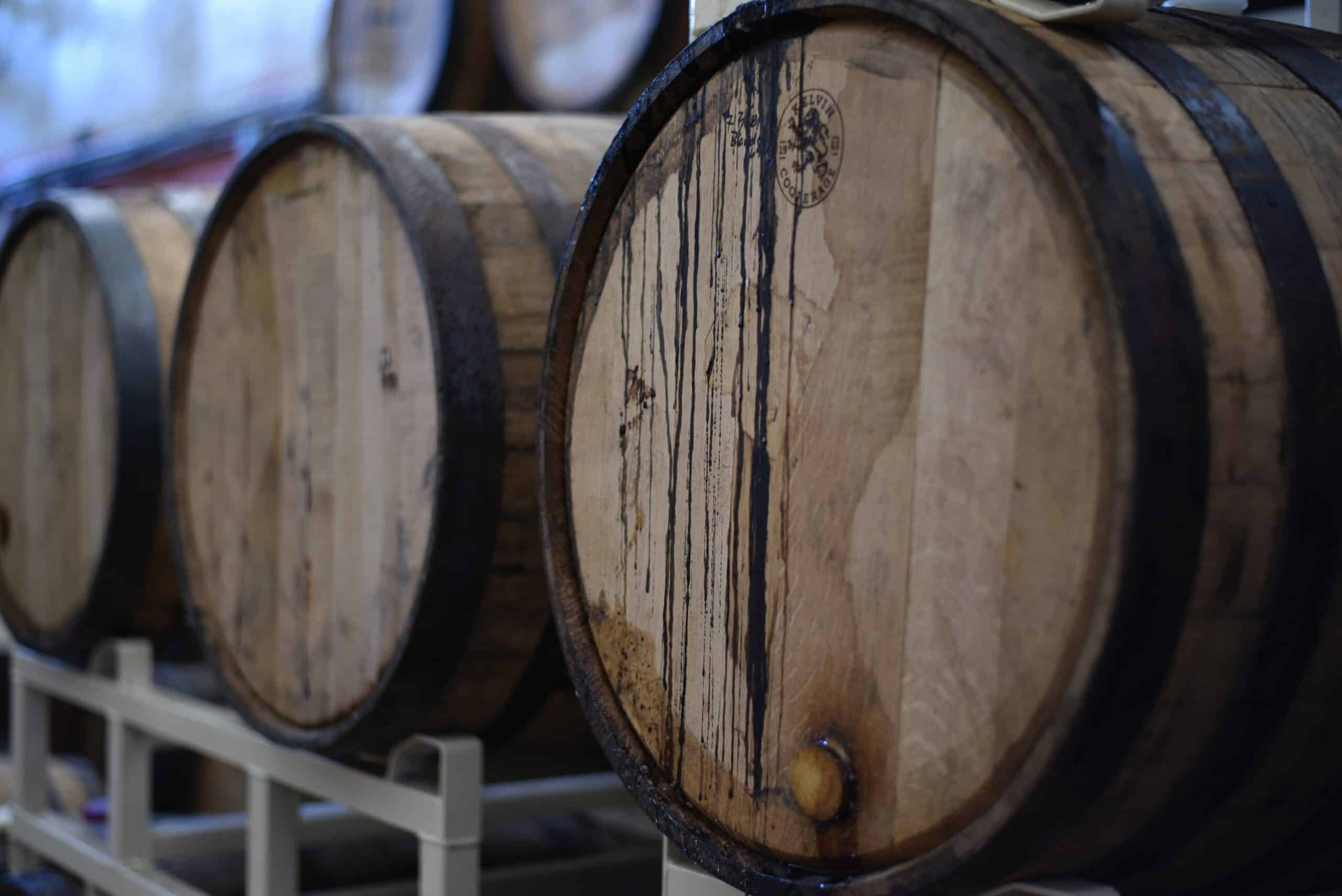
The Industrial Revolution
With the arrival of the Industrial Revolution, homebrewing took on a new lease of life. Steam-powered mechanisms and thermometers all contributed to the development of homebrewing, allowing much more control over the homebrew and offering up the ability to create new styles, such as pale ale and amber ale.
Prohibition
The Industrial Revolution certainly bought homebrewing to much of the world, including the US, but this was quickly put to a stop with the Prohibition of the 1920s. Or so they thought – the popularity of homebrewing actually increased during these years. Though accessing ingredients certainly became a headache for these homebrewers, and many turned to moonshine.
Modern Day Homebrewing
Despite repealing Prohibition in the ‘30s, homebrewing any beer recipe over 0.5% abv was still illegal up until 1978 – something of a golden year for keen homebrewers in the US, as this was the year that President Jimmy Carter announced that ‘any adult [could] produce wine and beer for personal and family use.’ God bless him.
As you can imagine, there was a veritable explosion in the popularity of homebrewing across the country, building on the already popular homemade wine craze. Instead of brewing beer from all sorts of odds and ends as you’d have done in the ‘20s, prospective homebrewers have access to a myriad of supplies, ingredients, brewing equipment, and educational resources.
From literally being able to ‘brew in a bag’ to having the tools to build a veritable laboratory of homebrewing prowess, to even taking a college course in homebrewing, the future hasn’t been brighter for this ancient art. We’ve come a long way from brewing our ale over an open fire, that’s for sure!

Types of Homebrewing
Considering humans have been brewing beer for thousands and thousands of years, you probably won’t be surprised to hear that there are several different types of homebrew that you can try. Just to clarify – these aren’t the ‘types’ as in pale ale, amber ale, IPA! There are three different main brewing options when it comes to beer, but keep in mind that brewing days depend on the recipe rather than the homebrewing method.
- Beer kits – the easiest and most foolproof way of brewing up your first beer; beer kits are a simple form of extract brewing – basically, you don’t need to do any boiling. All the tools you need are right there – follow the instructions, mix it all up and leave it to ferment. You can get beer kits at homebrew shops for ten a penny nowadays, and come they in all shapes and sizes.
- Extract brewing – extract brewing involves buying malt extract in a syrup or a dry powder form and skipping the ‘mash’ (when you extract the sugar from the malted grain) stage altogether. This is another simple method of homebrewing. However, when it comes to boiling, you’ll have to consider adding hops. Boiling helps to sterilize the beer.
- All-grain brewing – when you use malt for your homebrewing, making a mash out of malted barley is a necessary evil. You’ll also have to deal with what’s known as the ‘sparge’ – where you rinse the malt to get the last of the sugar out of it. This homebrewing option gives you the most amount of flexibility – but it can easily go wrong.
How To Get Started With Homebrewing – Essential Kit
So what do you need to start your homebrewing journey? While you can absolutely go back to the ancient method of open-fire brewing, we wouldn’t necessarily recommend it – unless, of course, you’re looking for a very smokey and rather curious tasting beer.
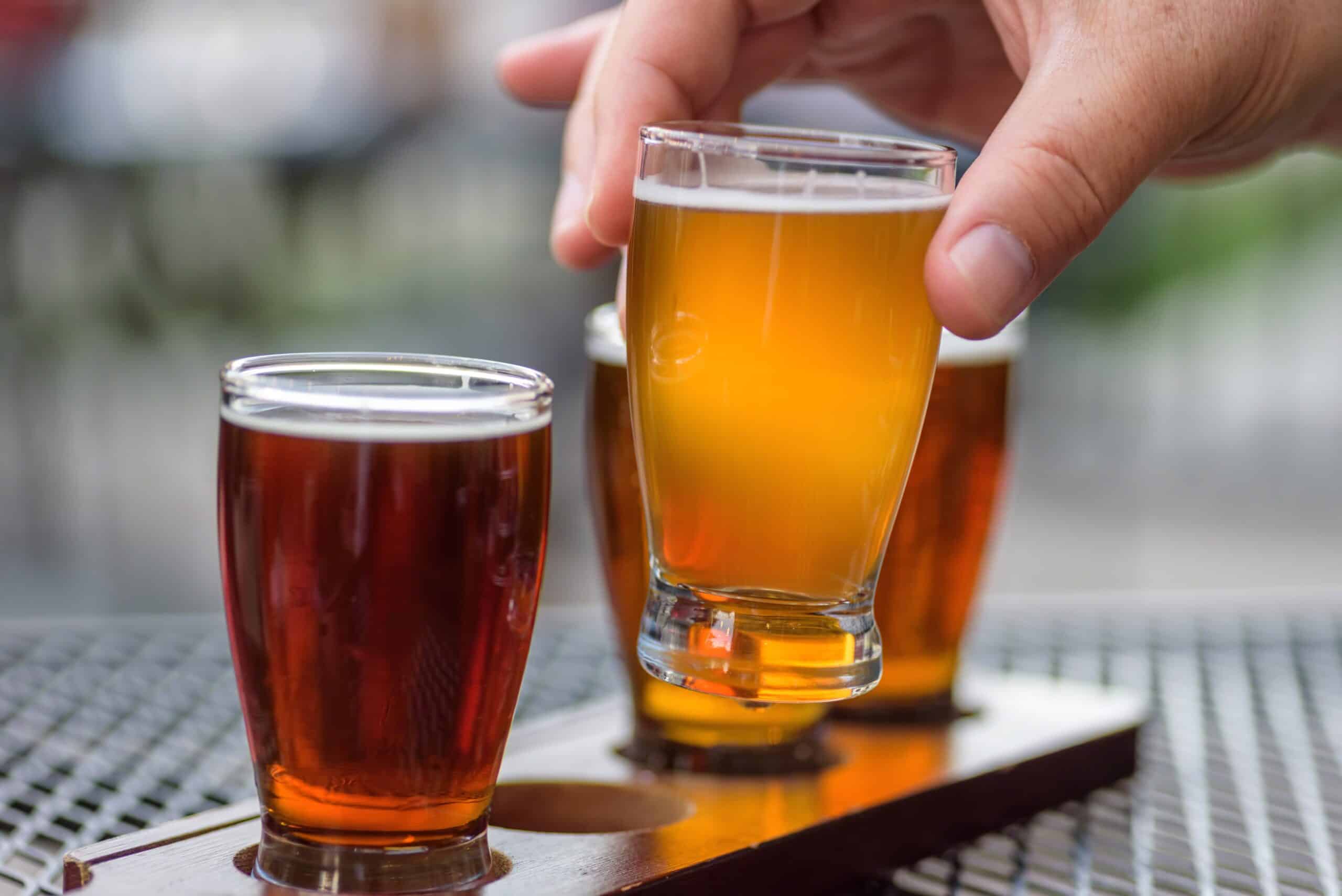
You’ll find it relatively easy to end up spending a small fortune on various bits of kit for your homebrew – but to make quality beer, you just need the essentials. We’ll take you through the various bits of gear that you’ll need to start brewing your craft beer.
- A fermenting bucket – this will be where the magic happens. Whichever brewing process you decide to go along with, your fermenting bucket will be your best friend. Make sure you get one with a lid, as we don’t advise leaving your beer to the mercy of the elements. You can also get them fitted with an airlock too, saving a bit of fuss.
Traditionally, you would use a demijohn or a carboy to brew your beer. These are usually made of glass, but plastic options can be found.
- An airlock – Many people will tell you that an airlock isn’t an essential piece of kit, but for a first-timer, having an airlock is a really great way to easily let your CO2 escape from your fermenting bucket – after all, you’ll otherwise have to crack the lid a little bit!
- A long stirrer – a long-handled stirrer – or, as it’s known in the business, a beer paddle – is an integral piece of kit for any homebrewer worth their hops. Ideally, this will be made of stainless steel, and you’ll want to make sure that it is carefully sanitized before you plunge it into your brew.
- A tap or a siphon – some fermenting buckets come equipped with a tap, but if not, you’ll need to grab yourself a tap or a siphon. This is to help you when you get to the bottling process, transferring the beer from the bucket to your bottles.
- A bottling stick – when used with your tap or your siphon, a bottling stick will become your best friend. Some bottling sticks have a stopcock on the tip, which makes bottling a whole load easier.
- Bottles – well, where else are you going to be storing your beer? While you can use old fizzy drink bottles (making sure that they are very carefully sanitized), you can also look into adding a professional dimension by using plastic bottles or glass bottles. Make sure you know whether you need to buy bottlecaps for them, though.
- Sanitation equipment – beer can be a temperamental beast, and when it comes to homebrew, you’ll want to make sure that the area you’re using is really clean and sanitary. Getting sanitation equipment is essential to make sure that there aren’t any wayward microbes that could easily end up spoiling your brew.
The Best Beer Recipes To Get Started With Homebrewing
While you’ll want to try your hand at brewing a Russian stout or an Imperial IPA, you might find yourself disappointed at the end of the fermentation time when you discover that the finished beer is undrinkable. There are some rather complex beers out there that can require a delicate touch, and failure in brewing these could lead to discouragement from the hobby all together.
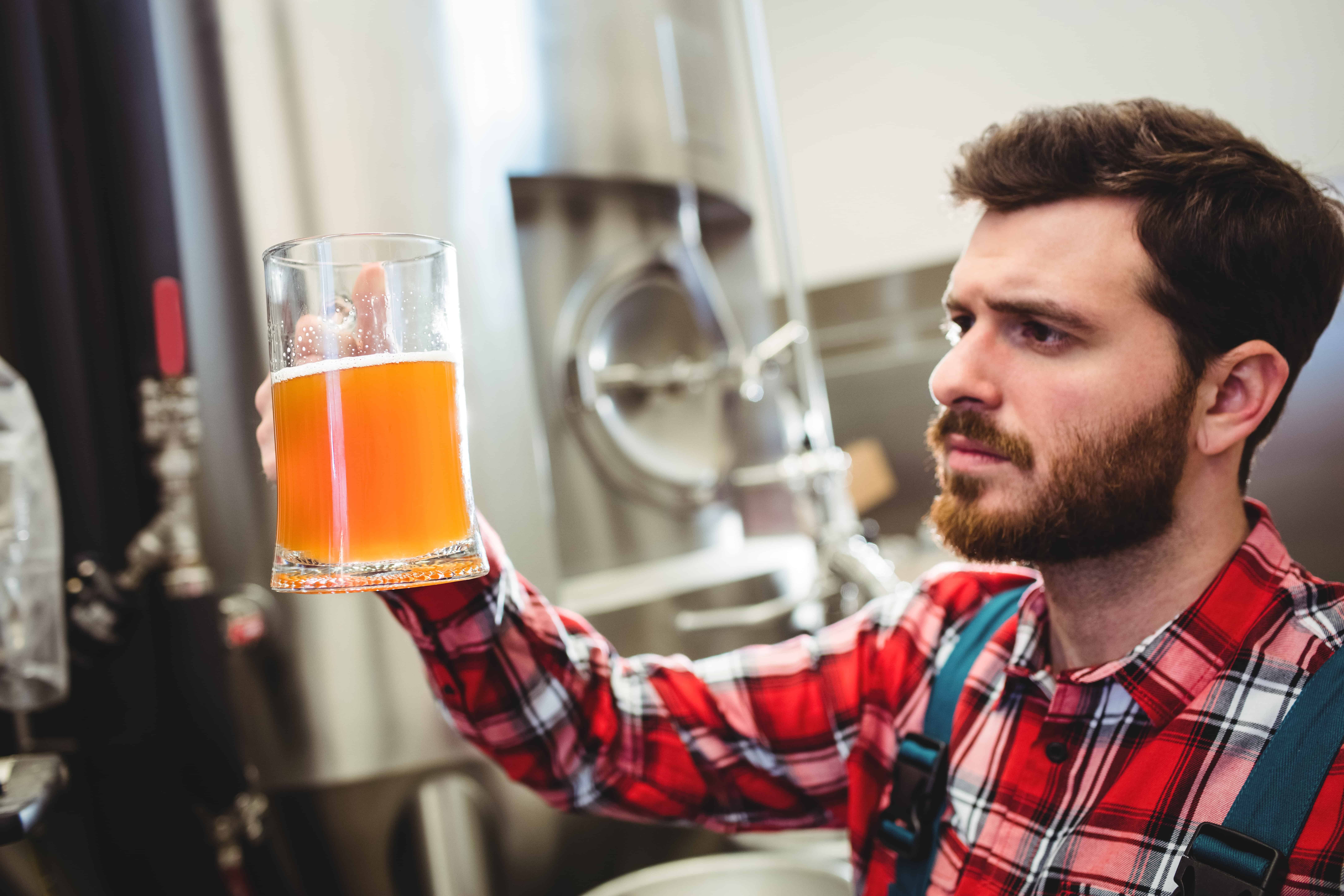
There’s nothing to say you can’t try and brew these beers once you’ve got a couple of homebrews under your belt – but we’d wholeheartedly recommend trying your luck with one of the following craft beer recipes if you’re getting started with homebrewing. They’re all fun to make, and all taste fantastic if you manage to get a good batch of beer.
- American Pale Ale – delicious and hoppy, when you get a good American pale ale, there isn’t much that can better it. And it is thanks to the hops and dry yeast, this is a great beginner’s beer as if you make a mistake with the rest of the brew; the hops should make it palatable despite everything.
- Amber or Brown Ale – amber ales and brown ales are both really lovely and balanced beers and are the basic ‘style’ of beer you can brew. They’re good and simple, with little possibility of messing up – plus, if it does go wrong, you can use the beer for cooking.
- Porter and Stout – both porter and stout are the most forgiving beers that a beginner can brew, largely thanks to the addition of dark malts, which gives them their unique color and flavor. The recipes for these craft beers include a variety of liquid and dry yeasts that are utilized to fermentate the wort. This more substantial, more rounded flavor profile means that any mistakes you might make could be easily masked.
- Saison Beer – make like a Belgian monk and try your hand at a Saison beer. While you may not hit the same flavors, they do each time, and you’ll still end up with something pretty solid through and through. The main thing to remember with a Saison beer is the yeast, so stock up on some Saison yeast.
Safety Tips for Homebrewing
While homebrewing is a pretty safe and satisfying hobby, you should be mindful of some basic principles and safety precautions. Humans have been fermenting for thousands of years, so if we haven’t learned a thing or two in that time, it would be quite a surprise.
One of the most important things to look out for a while brewing gallons of beer is insects or other bits and bobs getting into your brew. This effectively introduces new bacteria and could leave your beer tasting really rather disgusting. If it doesn’t taste as beer should, you shouldn’t drink it – it could end up causing a bit of a tummy upset.
Here are some other top tips to be aware of when homebrewing.
1. Cleaning Your Kit and Preparation Area
To make sure your homebrew is as good as it possibly can be, you’ll want to make sure all your equipment is really carefully cleaned and sanitized to ensure that no nasties are present and waiting to ruin your brew. To do this properly, you can find some bespoke brewing chemicals.
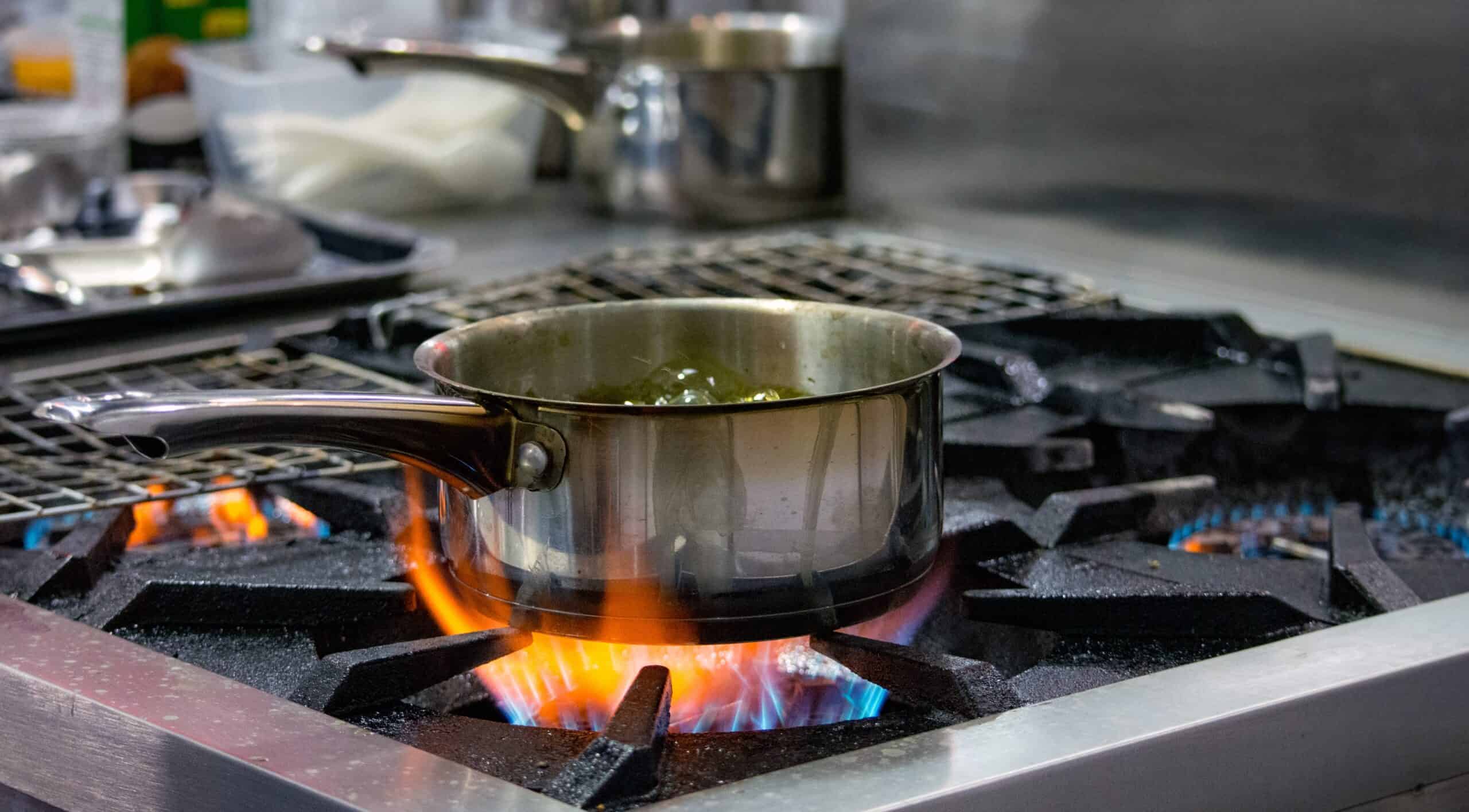
When cleaning, you should:
- Follow the instructions – all chemicals will come with instructions on how you should best use them, and you should follow these to the letter. Don’t add too much or too little either – make sure that you add the correct amounts.
- Wear gloves – some cleaning products are slightly more volatile than others, so you don’t want to have a bad reaction. Get some protective gloves when you’re cleaning your kit or sanitizing your workspace.
- Never mix chemicals – you might think that mixing your different cleaning and sanitizing chemicals will result in a better, quicker fix, but you should never do it. You don’t know how they might react to each other, and you could end up harming yourself.
- Rinse off your kit – unless you’re using a no-rinse sanitizer, you should make sure you really carefully and thoroughly rinse off all the chemicals you’ve used to clean your kit. If you don’t properly rinse off your equipment, you could end up with an undrinkable batch of beer.
2. Making Sure You Have Enough Space
The homebrewing process starts with the simple task of pouring cold water into the pot, and throughout the process, you’re going to be dealing with large amounts of boiling water.
So, having enough space is incredibly important, and making sure that the path from stove to fermenting bucket is clear is also essential. Trust us when we say that hot liquid malt is a challenge to clean!
3. Priming Your Bottles
When making your beer, you’ll basically be letting the liquid or dry yeast in the beer eat all the sugars during the fermentation. When you come to bottling, you’ll want to add a small amount of sugar to each bottle, making sure it is the same quantity for each bottle. This will give your beer a little bit of extra fizz when it ferments in the bottle itself.
This can result in some relatively volatile beer bottling if too much sugar is added, as you’ll end up with a build-up of carbon dioxide, which could cause the bottle to explode! One of the best ways to avoid this eventuality is to try and work out how much fermentable sugar is left in the beer before bottling. This will tell you how much you might need to add when priming it.

4. Handling and Storage
You may handle your homebrew with the gentleness of a newborn baby – it still won’t amount to anything if you don’t store it properly. The slightest bit of air during fermentation will result in moldy beer, and moldy beer is wasted beer. Take special care when transferring from pan to fermentation bucket, and get yourself a tight-fitting lid to keep all the nasties out.
It may be tempting to use glass wine bottles for your beer – but these are likely to be the most fragile option for storing your beer. Things like those 2-liter fizzy drink bottles are perfect, albeit unglamorous, as they’re specially designed to stand a lot of pressure. Plus, you can always let out some of the pressure using the plastic lid if it’s getting a bit lively.
Where to store all your homebrew? Well, you can keep it just about anywhere – though ensure it’s sheltered from sunlight and not near any direct sources of heat. As with most things, a cool, dark place is the ideal place to store, as explosions and decreased flavor will be avoided!
Our Top Recommendations
So those are some basic tips and tricks to follow when you set out on your homebrewing path. Below, we’ll give you some insider knowledge and some of our favorite tips and tricks to lead you to successful, satisfying homebrew.
Don’t Start Small
Many people will think that they’ll start with a smaller kettle and work their way up when making their first craft beer from scratch. We can safely say that a bigger brew kettle is a much better option to go for. There’s less chance of it boiling over, and if you get homebrew fever and want to try all-grain brewing, then you’ll be ready to go.
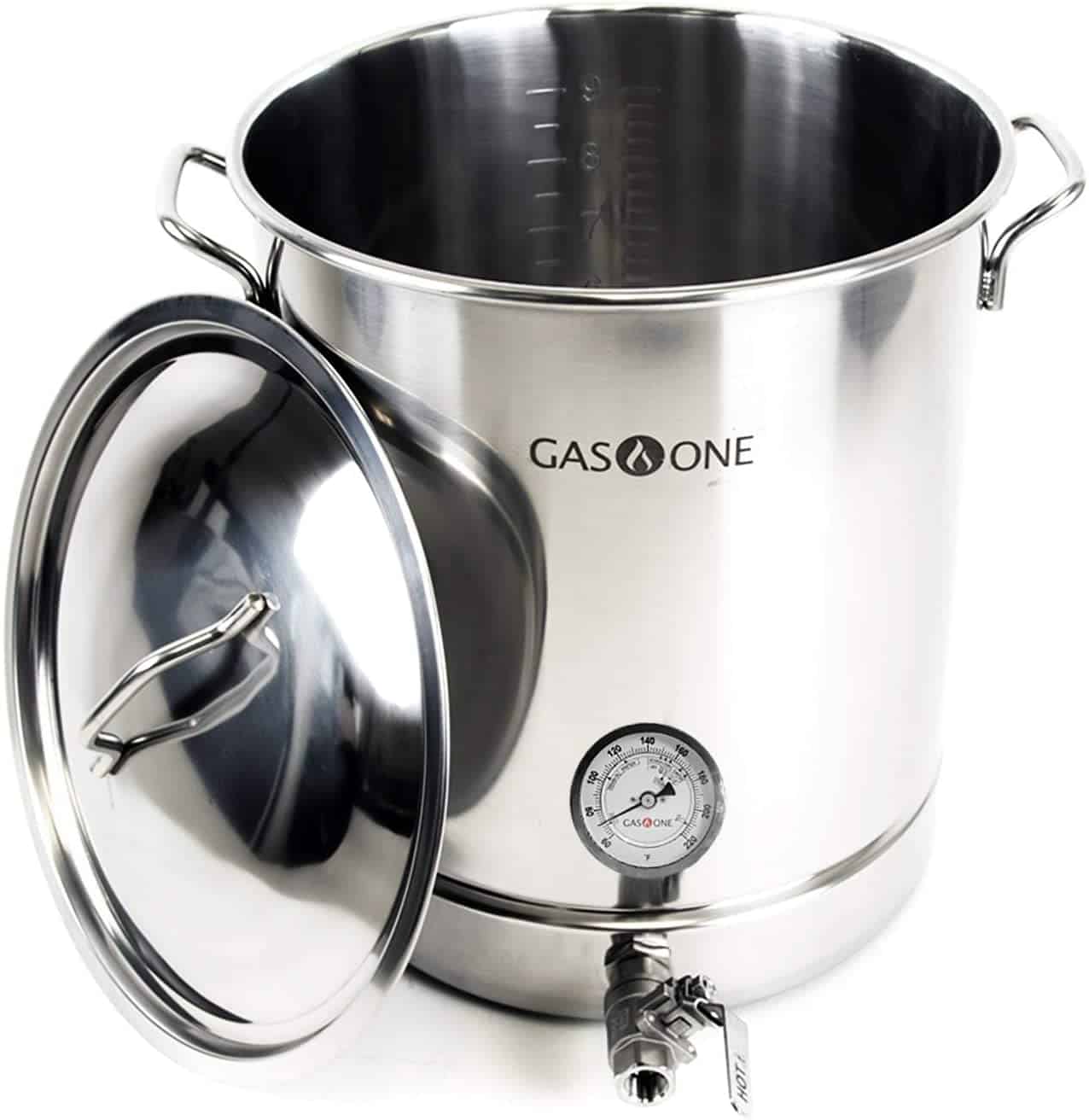
Use the Dishwasher
We’re sure that you use your dishwasher anyway if you have one – but it can actually come in handy for bottling your beer when the time comes. Bottling your homebrew is a messy business, and you can end up with splashes of beer all over the place – not ideal. Use the open lid of your dishwasher to bottle, and you won’t have to mop up all the spillage. Genius!
Protect Your Stove
Trust us when we say that it’s a nightmare to clean up if your beer boils over onto your stove. Sadly it’s all part and parcel of the homebrewing experience, but you can make your life that bit easier (and avoid cleaning up all sorts of sticky malty chaos, too) by laying down some foil onto your stove with the burners poking through. Then, after you’re done boiling, chuck it all away.
Brew With a Buddy
Homebrewing is a pretty big deal nowadays, and, likely, one of your friends will already be brewing away quietly. Homebrewing with someone who has already done it before is one of the best ways you can learn the ropes, especially if you’re starting, so buddy up and get brewing.

Treat It Like Cooking
Homebrewing is no different from cooking, really – you’re using multiple ingredients to create something. Get yourself one of the many books there are on offer about homebrewing and how to do it best – our personal favorite has to be Radical Brewing by Michael Jackson (no, not that one!). Understanding your beer will lead you to greater success.
Frequently Asked Questions
Let’s take a look at some of the more commonly asked questions around homebrewing and how to get started with homebrewing.
Question: How much does it cost to get started with homebrewing?
Answer: This is the burning question that most people who want to get started with homebrewing want to know. Luckily, the rumors are true – while the initial investment can seem a little pricey, the pay-off, in the long run, is well worth it, and you could be looking at the equivalent of just a couple of bucks per bottle of homebrew!
Question: How difficult is it to get started with homebrewing?
Answer: While you may be a little flummoxed with some of the terminology we’ve gone through today, and you might think it’s a little complex, you’ll be pleasantly surprised. If you have a craft beer kit and follow the recipe and instructions to the letter, you’ll be guaranteed an excellent brew.
Question: When will my homebrewed beer be ready to drink?
Answer: Sadly it’s not an instant process – you’re going to have to wait a little bit before you get to sample your homebrew! On average, the brewing process will take between four and eight weeks – so about two months. Four weeks is the minimum, though, so if you’re feeling thirsty, then don’t hang around!
Question: Is homebrewing smelly?
Answer: With so many different components, you might be worried that it’s a smelly business making homebrewed beer. Luckily, it’s only really a little smelly on the day you go and brew the beer, and you might get the occasional yeasty whiff while it’s fermenting in the bucket, but other than that, it’s a pretty painless operation.
How to Get Started With Homebrewing – Final Thoughts
So there is just about everything you could possibly want to know about getting started with homebrewing and everything you might need to start on your homebrewing journey. Don’t fall at the first hurdle – we can guarantee that with every brew, you’ll get better and better, and soon you’ll be whipping up those Russian stouts and Imperial IPA’s like it’s nobody’s business.
Continue Reading:
